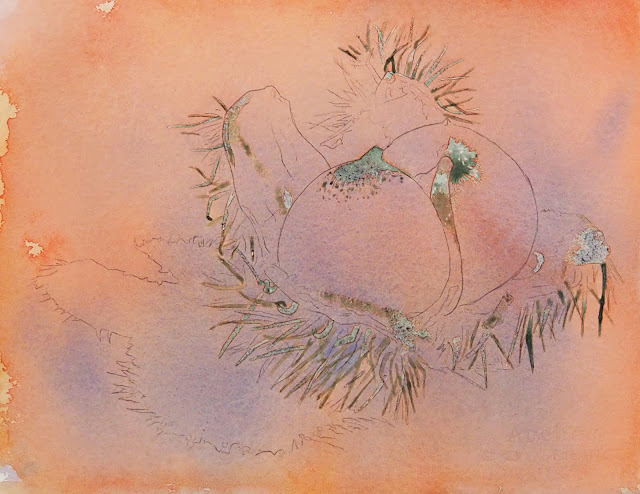Many thanks to everyone who helped with the paint pouring of the brewery tables! They look beautiful. I am posting the pictures of the tables here, the pictures do not do the tables justice.
11/22/19
Art & Ale Colored Pencil October and November, 2019
 |
| Colored pencil on Grafix Dura-Lar Matte paper. The black and white side with a white background. |
 |
| Colored pencil on Grafix Dura-Lar Matte paper. The black and white side with a black background. |
NCBG IEW October and November, 2019
 |
| How it looked before class. |
 |
| An example from another class. |
11/14/19
Art & Ale CP October and November, 2019
NCBG IEW October and November, 2019
 |
| I added a few more bracts and added a light glaze of warm red to the top portion of the background. To do this I wet the background and added in the color. I plan to do this on the entire background. |
NCBG IEW October and November, 2019
 |
| I did a small pour with blue (ultramarine) in the bottom shadow area and removed a little masking. This was before class |
 |
| I painted some blue and dropped in red in some of the dark areas so that it would dry and I could remove the masking before the next demonstration in class. I started making some dark spikes. |
 |
| I removed more masking leaving some to show the removal during class. |
11/13/19
NCBG IEW October & November, 2019
 |
| I masked more and poured with the red and blue and a small amount of warm yellow. |
11/7/19
Art & Ale CP October and November, 2019
NCBG IEW October and November, 2019
S CW August and September, 2019
 |
| I finished the unfinished areas adding shadows, darkening some dark areas and adding some textures. i glazed the background to make the gray a blue and green gray. |
BAL CP&MM, October, 2019
 |
| I finished the areas that had been left unfinished (the left ear and the body and sides of the face). I used the same colors and lots of white. I also lightened the background with white. |
DAC CP&MM, July and August, 2019
 |
| I continued working on the dog adding lights and darks. Overall I lightened lots of areas as it needed it. |
DAC MM, Jan. and Feb., 2019
 |
| I worked more on the turtles focusing on the values and color as well as texture. I made the background lighter at the top and darker at the bottom to mimic the light in the ocean. |
11/3/19
11/2/19
Art & Ale, October and November, 2019
11/1/19
DAC CP October, 2019
10/24/19
BAL CP & MM October 2019
 |
| I added a little more light and some color and some black to help it pop more. need to finish the neck... |
 |
| I worked a little on the left side of the neck and more on the tongue (added highlights). |
DAC CP October, 2019
 |
| I started adding peacock blue )green blue) to the left side eye. I shaded in the peacock blue, carefully, as well as a little scarlet lake (warm red). We will work on her more in the next class. |
10/17/19
BAL CP and MM, October 2019
Subscribe to:
Comments (Atom)



































